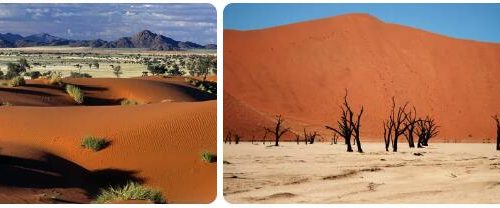Geography of McLean County, North Dakota
McLean County, located in the central part of North Dakota, offers a diverse array of geographical features, from its rolling prairies to its winding rivers. This county, covering an area of approximately 2,231 square miles, is home to a rich tapestry of landscapes, climates, and water bodies that have shaped its history and continue to influence its present-day character. Check climateforcities to learn more about the state of North Dakota.
Geography
McLean County lies within the Great Plains region of North America, characterized by vast expanses of flat or gently rolling terrain. The county’s landscape consists primarily of prairies, with some areas featuring hills and valleys formed by glacial activity during the last Ice Age. The Missouri Plateau, a subdivision of the Great Plains, dominates much of the county’s western portion.
Climate
McLean County experiences a continental climate, typical of the Great Plains, characterized by hot summers, cold winters, and relatively low precipitation throughout the year. The climate is influenced by the county’s inland location and its distance from large bodies of water.
Summers in McLean County are warm to hot, with average high temperatures ranging from the upper 70s to the mid-80s Fahrenheit. However, occasional heatwaves can push temperatures into the 90s or even above 100 degrees. Summers also tend to be relatively dry, with occasional thunderstorms providing much-needed precipitation.
Winters in McLean County are cold and snowy, with average high temperatures ranging from the 10s to the 20s Fahrenheit. Arctic air masses from Canada frequently bring bitterly cold temperatures, with lows plunging well below zero. Snowfall is common during the winter months, with the county receiving an average of around 30 to 40 inches of snow annually.
Spring and fall are transitional seasons in McLean County, with fluctuating temperatures and unpredictable weather patterns. Spring is typically characterized by warming temperatures and increasing precipitation, while fall sees temperatures gradually cooling and the onset of frost.
Rivers and Lakes
McLean County is home to several rivers and lakes, which play a crucial role in the region’s ecology, economy, and recreational opportunities.
The Missouri River forms the county’s western border, serving as a vital waterway for transportation, irrigation, and recreation. The river’s flow is regulated by a series of dams, including the Garrison Dam, which forms Lake Sakakawea, one of the largest reservoirs in the United States. Lake Sakakawea provides opportunities for boating, fishing, and other water-based activities, attracting visitors from across the region.
The Knife River, a tributary of the Missouri River, flows through the central part of McLean County. This river has played an important role in the history of the region, serving as a transportation route for Native American tribes and later European settlers. Today, the Knife River is popular for fishing, particularly for species such as walleye and northern pike.
In addition to rivers, McLean County is home to several smaller lakes and reservoirs, including Coal Lake and Brush Lake. These bodies of water provide additional opportunities for fishing, boating, and wildlife viewing.
Vegetation
The vegetation of McLean County is predominantly grassland, consisting of native prairie grasses such as big bluestem, little bluestem, and prairie cordgrass. These grasses provide habitat for a variety of wildlife species, including pronghorn antelope, white-tailed deer, and upland birds such as pheasants and grouse.
In addition to grasslands, McLean County also contains areas of mixed-grass prairie, characterized by a combination of grasses and forbs such as goldenrod, coneflower, and milkweed. These diverse habitats support a wide range of plant and animal species, contributing to the county’s biodiversity.
Human Impact
Human activity has had a significant impact on the geography of McLean County, particularly in terms of agriculture and energy development.
Agriculture is the dominant land use in the county, with large tracts of land devoted to the production of crops such as wheat, barley, and soybeans, as well as livestock grazing. The fertile soils of the region, combined with irrigation from the Missouri River and its tributaries, support a thriving agricultural industry that contributes to the local economy.
Energy development is also an important aspect of the county’s geography, particularly in recent decades with the expansion of oil and gas extraction from the Bakken Formation. This has led to the development of oil fields and associated infrastructure such as drilling rigs, pipelines, and processing facilities. While energy development has brought economic benefits to the region, it has also raised concerns about its environmental impact, including habitat fragmentation, water pollution, and air emissions.
Conclusion
In conclusion, McLean County, North Dakota, is characterized by its diverse geography, including rolling prairies, winding rivers, and expansive lakes. The county’s continental climate, with its hot summers and cold winters, shapes life in the region and influences activities such as agriculture, recreation, and energy development. While human activity has left its mark on the landscape, the natural beauty and ecological richness of McLean County continue to draw visitors and residents alike, ensuring that its geography remains a defining feature of the region.
You May Also Like

Blee Inara Fashion Jewelry – Los Angeles, CA
August 19, 2015
Africa Geography
September 26, 2022